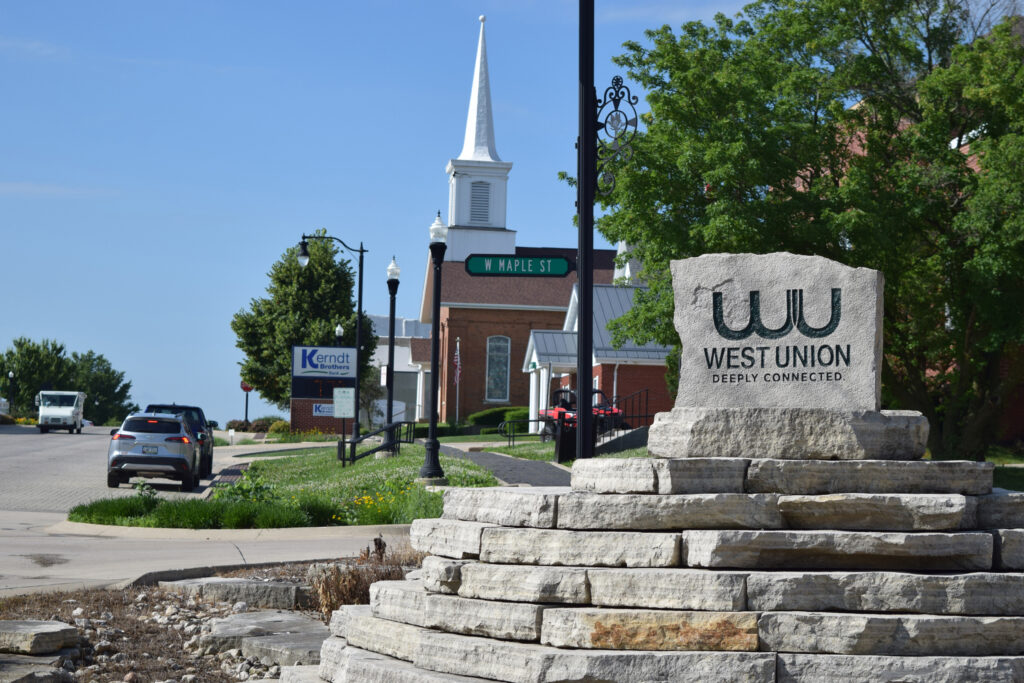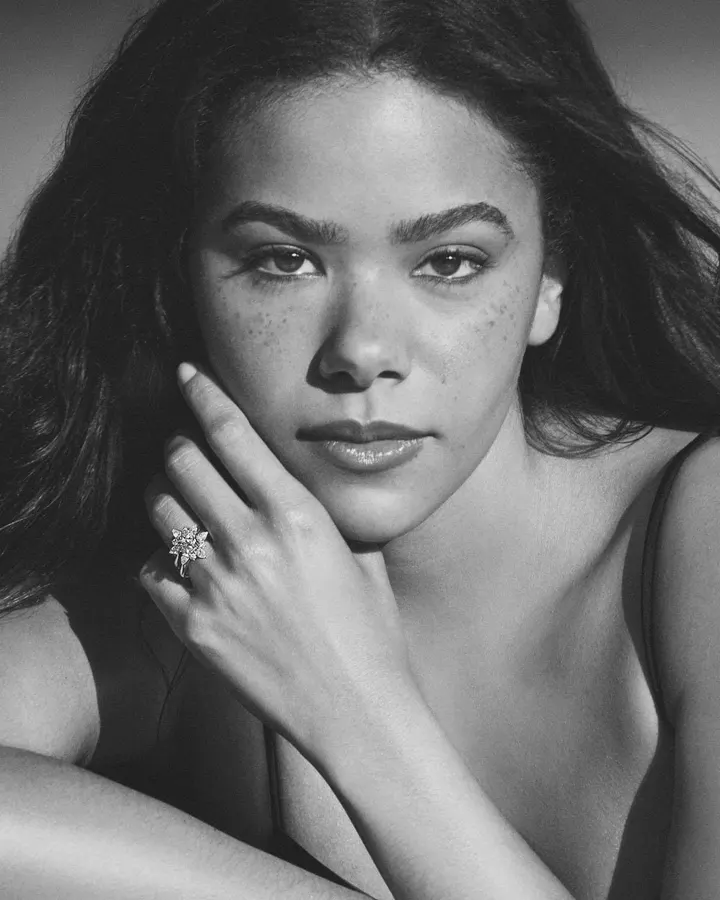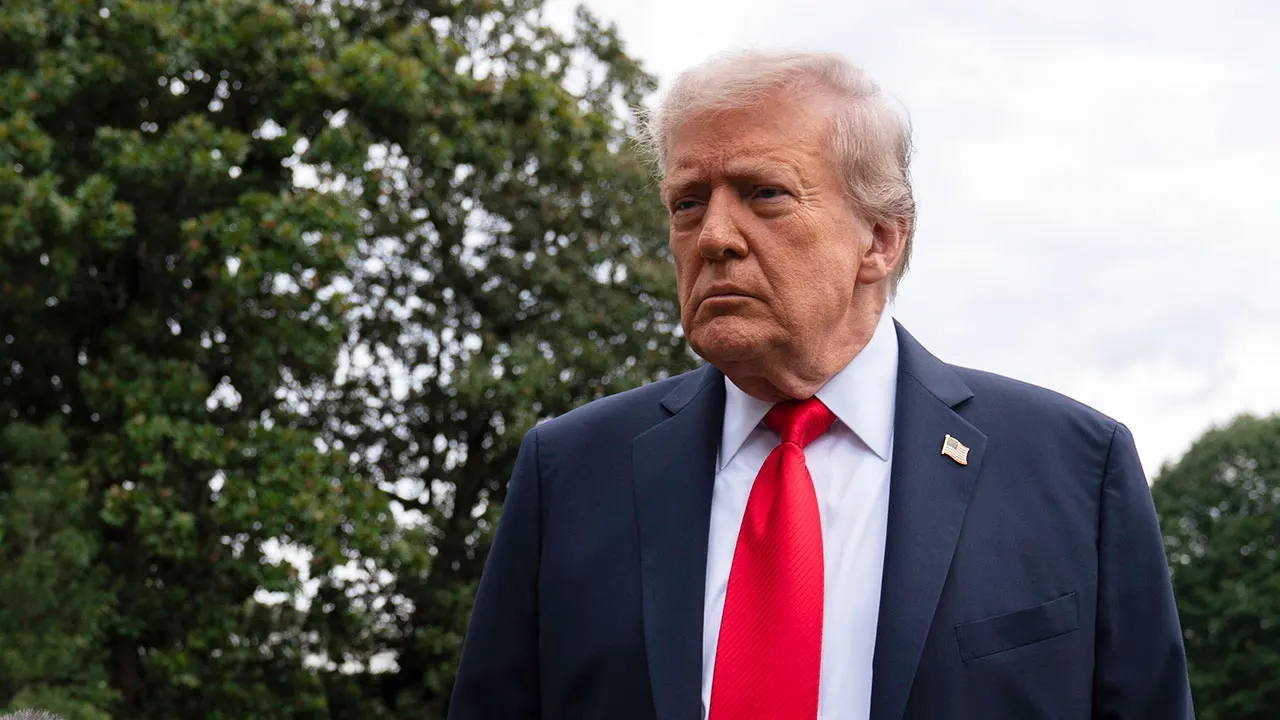This Town Was One of the First in the Nation to Install a Geothermal Network. Now Others Are Warming Up to the Idea.

WEST UNION, Iowa—From the billboard on the edge of town to the limestone monument on Vine Street, the signs are hard to miss: “West Union, Deeply Connected.” It’s a motto that could apply to many tight-knit farm towns across the Midwest where families date back generations.
But in this town of 2,500, the words have additional meaning.
Buried beneath the front lawn of the county courthouse and town square are 132 boreholes, each 300 feet deep. Pipes connected to the bores run below the surrounding blocks, providing downtown businesses with year-round geothermal energy. The high-efficiency, fossil-fuel-free heating and cooling system owned by the town was one of the first municipal thermal networks in the country when it began operating in 2014.
For Steve Fate, the president of West Union District Energy, which oversees the system, its appeal is simple.
“It saves us money, and will continue to save us money,” Fate said, emphasizing the financial benefits of the geothermal system.
In 2023, the U.S. Department of Energy highlighted West Union as having one of the highest-performing geothermal networks among a small but growing number of similar systems in operation nationwide.
“It’s sort of a celebrity among thermal energy networks because it was constructed very early,” said Jessica Silber-Byrne, the thermal energy networks research and communications manager for the Building Decarbonization Coalition, a nonprofit organization working to eliminate the use of fossil fuels in buildings.
The library, county courthouse, a law office, two banks, an insurance company and a shoe store are among the twelve buildings connected to the geothermal system. Each user is part of the energy district, the group that oversees its operation.
The system has underground boreholes that serve as a thermal equalizer. A mixture of water and glycol circulates through pipes in each hole, where underground temperatures remain at approximately 50°Fahrenheit year round. As the water travels through the vertical bores, it is warmed or cooled by the surrounding rock and sediment until it stabilizes at 50 degrees, a temperature well-suited for cooling on hot summer days and a great starting point for heating buildings in the winter months.
A loop of horizontal pipe running beneath six blocks of West Union’s downtown then circulates the ground-temperature water to buildings connected to the system. Heat pumps in each building use compressors and fans to further warm or cool the buildings, depending on the time of year. These water-source heat pumps work the same way as air-source heat pumps that draw on outdoor air for heating and cooling, but are more efficient.
The high-density polyethylene pipe used in the bores and distribution loop is the same type of pipe used by water, sewer and gas utilities. It is expected to last 80 years or more, based on an independent analysis of the West Union network conducted in 2021. The heat pumps located in each building have a life expectancy of up to 24 years according to the U.S. Department of Energy.
In community spaces like the library, the heating and cooling is a public service, Fate said.
“It’s going to be warm today and humid, and we’re going to have community members just coming in here for the day,” said Fate, who is also the president of the West Union Community Library Board of Trustees, during a visit in late June when temperatures would reach 89° Fahrenheit outside. “On our winter days, when it’s 20 below zero, we have people that come in, off and on all day long, because there’s a warm spot to be.”
Perfect Timing
Geothermal heating and cooling is just one of several sustainability projects that West Union completed in the early 2010s as part of a revitalization project that included a complete reconstruction of its downtown streets. Other initiatives included replacing the existing asphalt with porous pavement that lets water seep into the ground and bioswales or rain gardens that slow and filter stormwater runoff. The city worked closely with the Iowa Economic Development Authority, which was looking to fund sustainable pilot projects in towns across the state. The state agency brought outside experts to West Union to discuss options with residents.
“We just basically brainstormed ideas—even if they were off the wall and seemed ridiculous,” said Jon Biederman, a civil engineer who was part of the town’s redevelopment planning team. “Some of those were taken off the table right away, but one that kind of hung on was geothermal.”
Biederman and others in town were familiar with small-scale geothermal energy. Some had ground-source heat pumps connected to one or two boreholes that provided heating and cooling for their homes. Another small-scale system, completed in 2007, provided heating and cooling for the high school’s performing arts center.
During the brainstorming sessions, someone mentioned a much larger thermal energy network in Holland, Michigan, that used waste heat from a nearby power plant to fuel a snowmelt system for streets and sidewalks across much of the city’s downtown.
West Union didn’t have a power plant and the waste heat that comes with it, but its residents decided to pursue geothermal on a similar scale to provide heating and cooling to the town’s business district. The decision was made easier in part by plans to rip up and replace most of the streets downtown. With the ground already exposed, it would be less costly and disruptive to bury water pipes connecting the borefield to nearby buildings.
The town was able to secure state and federal grants driven by stimulus funding following the Great Recession of the late 2000s. The grants covered the majority of the streetscape project and the entire cost of the $2.2 million geothermal system.
“The timing was just right for making the geothermal happen,” Biederman said. “I don’t know that it would have ever happened before that, or probably since. It was just absolutely perfect for timing.”
For the buildings connected to the system, the savings are significant.
Biederman estimated that his engineering firm’s office building saves a few hundred dollars a month with geothermal energy compared to what they would otherwise pay today if they kept their prior heating and cooling systems.
Fate, the library board president, calculated that the building’s costs for heating and cooling have decreased by 25 percent per square foot since the geothermal system was first installed.
Pat Dillon, a local attorney who connected his West Union office building to the town’s geothermal network several years ago, saw his winter heating bill drop nearly in half from $350 to $180 per month.
“It provides consistent, nice heat in the wintertime, and it’s cool in the summertime,” Dillon said. “It’s meeting all of our objectives.”
Learning Curve
As one of the first communities in the country to own and operate such a system, there were challenges early on.
“There weren’t good examples to fall back on, like ‘How do we bill everybody? What does that look like?’” said Robin Bostrom, the former head of the West Union Chamber of Commerce’s Main Street program, an economic revitalization and historic preservation initiative. “They had to kind of wade through that and figure it out.”
Users of the network formed their own limited liability corporation and hired a geothermal service provider to monitor and maintain the system. Initially, costs were high, and the savings from switching to geothermal were minimal. However, a new service provider hired in 2021 provided the same services at a fraction of the cost. The change has allowed the user group to reduce the amount they pay for thermal energy from $14 per ton of heating and cooling capacity in 2021 to $9 per ton today.
This story is funded by readers like you.
Our nonprofit newsroom provides award-winning climate coverage free of charge and advertising. We rely on donations from readers like you to keep going. Please donate now to support our work.
Donate Now
When the project was first completed, it was anticipated that it would be a model for the nation. In the early years, the town received a lot of calls about the streetscape and its permeable pavers, but there was little interest in the geothermal system, Biederman said.
That’s beginning to change.
“We used to get a call every once in a while. Now it’s really consistent,” Fate said, noting a group recently visited from Vermont.
Hot water from thermal springs has been used in district heating systems in the U.S. for 150 years, but the West Union network was the first ambient temperature system owned by a municipality, Silber-Byrne of the Building Decarbonization Coalition said.
There are now dozens of neighborhood-scale networks and district energy systems that tap geothermal energy for heating and cooling in operation in the United States, research from the organization indicates. Dozens of additional systems are currently under development.
In addition to geothermal heating and cooling, deep, hot-rock geothermal projects that generate steam for electricity production are also seeing increased interest. New, enhanced geothermal systems that draw on hydraulic fracturing techniques developed by the oil and gas industry and other advanced drilling methods are quickly expanding geothermal energy’s potential.
Silber-Byrne said legislation that allows, or in some cases requires, utilities to install geothermal systems is partly responsible for the uptick in the heating and cooling networks. Twelve states, including those on the West Coast, Midwest, Northeast as well as Colorado and Texas, have passed laws related to geothermal heating and cooling in recent years, according to the organization.
Tax incentives introduced during the Biden administration and largely preserved in the Trump administration’s One Big Beautiful Bill Act are also driving interest in the networks, Silber-Byrne said.
Interest from utilities and communities in using geothermal energy instead of gas as a means to meet their climate goals and protect against natural gas price spikes during periods of peak demand is also spurring new projects.
The biggest challenges to adoption remain unfamiliarity with the systems and their high upfront cost, Silber-Byrne said. While the West Union system was financed entirely by federal grants, some in the community were initially opposed to, and spoke out against, a largely unproven system.
“Either they didn’t have the information they needed, or they were afraid, or we didn’t communicate well enough from the start,” said Dick Woodard, a retired insurance agent who has owned two buildings connected to the system.
“It was years ahead of its time,” said Larry Leliefeld, former president of the Iowa Geothermal Association, an industry group, and the current service provider for the West Union geothermal system. “What it lacked was bringing [people] along and helping them understand it.”
Now, as the West Union geothermal network enters its second decade of operation and its user rates decrease while gas and electric rates climb, more local businesses are considering connecting their buildings to the existing network, Fate said.
The local elementary school in West Union recently installed its own geothermal system.
“It’s kind of like church,” Woodard said. “If you want to change the hymns, then you are going to have somebody squawking about it. That’s the way it was here. You get past it.”



